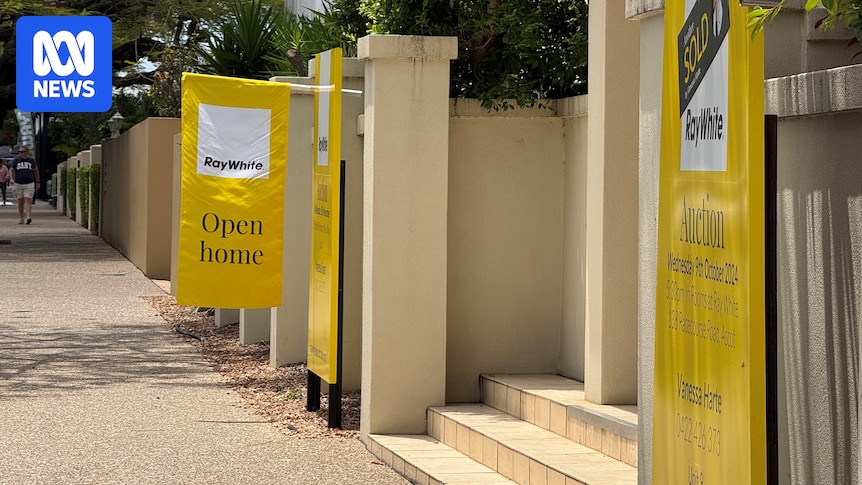
Housing prices have soared to unprecedented levels in June, driven by declining interest rates that have bolstered market confidence. According to the latest home value index from property research firm Cotality, national dwelling values increased by 0.6 percent, marking the fifth consecutive month of growth. This follows a slight dip of 0.3 percent during the summer period.
While most capitals experienced a rise in values, Hobart was the exception, recording a decrease of 0.2 percent. The trend in June saw major cities outperform regional markets, reversing the previous pattern where regional areas led in growth. Data from REA Group’s PropTrack also confirmed house prices reaching historic highs, with Adelaide showing the strongest monthly increase at 0.6 percent, culminating in a nearly 10 percent rise over the year.
Interest Rates and Market Dynamics
“So far this year, the capital city markets are leading the charge,” said Eleanor Creagh, REA’s senior economist, in an interview with ABC News. Creagh anticipates that further interest rate cuts will continue to drive housing demand. The median house price in Brisbane now exceeds $1 million, a significant milestone.
Tim Lawless, head of research at Cotality, emphasized the impact of lower interest rates. “The biggest factor here absolutely is lower interest rates,” he explained. “I don’t think it’s a coincidence we started to see housing values rising after a brief downturn in February.”
Earlier this year, the Reserve Bank cut interest rates for the first time in nearly five years, with a subsequent cut in May bringing the cash rate below 4 percent. These moves have significantly influenced market dynamics.
Growth Patterns Across Regions
Despite the overall upward trend, growth has not been uniform across the country. Cotality found that Darwin recorded the strongest house price growth at 1.5 percent for the month, attributed to its relative affordability compared to other capitals. “I think the growth trend we’re seeing now, evident over the past 12 months, is really being fueled by renewed investment activity in the Darwin marketplace and its sheer affordability,” Lawless noted.
Darwin’s median dwelling value is approximately $540,000, significantly lower than other markets, making it an attractive option for investors. “Rental rates in general are quite high, which is probably incentivizing more renters to consider buying at relatively affordable price points,” Lawless added.
“Most markets are at near record highs and have been pushing to new record highs month after month, for some time,” Lawless commented, labeling some markets as “extremes.”
Affordability Challenges and Future Outlook
Despite the high growth rates, Lawless pointed out that the current rate is not as robust as in previous years. “If you go back a couple of years, the rate of growth was about double what it is at the moment,” he said. “Affordability constraints are holding back a higher level of growth even as interest rates fall.”
With the Reserve Bank expected to deliver more relief for mortgage borrowers soon, falling interest rates are predicted to sustain price growth. However, both Cotality and PropTrack caution that factors such as elevated household debt, reduced demand from slowing population and migration growth, cautious lending policies, and geopolitical risks could temper increases.
“Stretched affordability is putting a bit of a handbrake on home price growth,” Creagh explained. “While we’re seeing an upswing in prices this year as rates fall, the pace of growth is more gradual compared to previous easing cycles.”
Lawless concurred, stating, “We’re still seeing housing very much unaffordable for most Australians. I think there are still a few barriers to really see the housing market take off from here.”
Impact on Renters and Housing Structures
While falling interest rates benefit borrowers, the growth in home values may negate affordability advantages. According to Cotality, the 2.4 percent rise in national dwelling values in the first half of the year equates to a median dwelling value increase of approximately $19,000, eroding much of the benefits of lower rates in terms of borrowing capacity.
For renters, the pace of rent increases has been slower than housing values, with national rents rising by just 3.4 percent over the past 12 months, the lowest annual increase since early 2021. “Finally, a little bit of relief for renters,” Lawless said, noting that rents are not decreasing but rising more slowly than in the past five years.
The lack of affordable housing has led to changes in household structures, including a resurgence of share houses and multi-generational households. “Some of the largest slowdowns in rental growth have been in major capitals like Sydney and Melbourne, particularly in apartment markets,” Lawless observed. “We’re seeing more group households forming and multi-generational households becoming more common, reflecting rental affordability challenges.”





